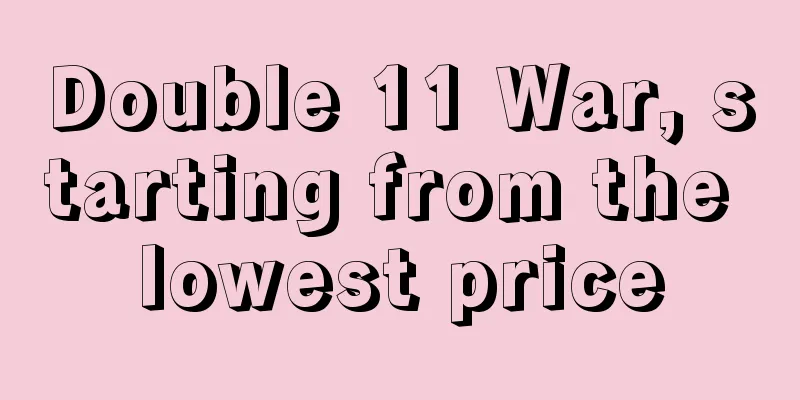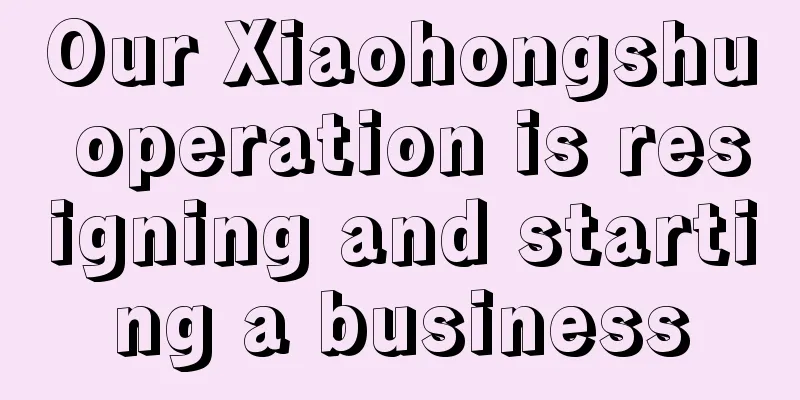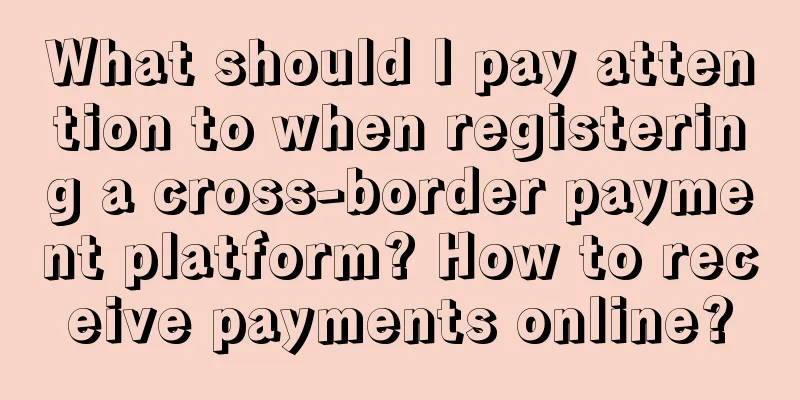Double 11 War, starting from the lowest price

This year's Double 11 started earlier than in previous years. Short video platforms even kicked off the Double 11 promotion earlier than traditional e-commerce platforms. On October 18, Kuaishou e-commerce officially launched the Double 11 pre-sale with the theme of "Big brands get 10 billion yuan in subsidies, all in Kuaishou Mall". After that, JD.com, Taobao Tmall, and Douyin all launched Double 11. Different from the previous Double 11, this year, all major platforms have focused their strategic focus on "low prices". For example, JD.com emphasizes real low prices, allowing consumers to buy with their eyes closed; Taobao and Tmall set the lowest price on the entire network as the core goal of Double 11. In addition to low prices, the platforms have taken the initiative to abandon the complicated preferential methods of the past, simplifying them and implementing "instant discount for single items" and "no combined orders". In addition, delivery speed is also a highlight of this year's Double 11. Cainiao will continue to provide half-day delivery and door-to-door delivery services during Double 11, and promise to compensate for late delivery. Platform services can be said to be "all ready", but will consumers return to the era of crazy "buy, buy, buy"? Is the "lowest price" war really cheap? Who holds the pricing power? 1. “Lowest Price” GameSeizing the user's "lowest price" mindset has become a common choice for all players. Consumers can get good deals, but for merchants, how to implement the lowest price strategy is a technical job. A brand manager told Tech Planet that before every big promotion, the platform will communicate with merchants and formulate a promotion mechanism. This year, the demands of each platform are different. JD.com's procurement and sales will hope for a lower price, Taobao Tmall focuses on asking for price cuts on the main products, and Douyin Mall asks for a 15% price cut. A merchant who participated in Douyin's Double 11 told Tech Planet that Douyin Mall is more aggressive and requires merchants to reduce prices by 15%. In addition, Douyin also puts forward requirements on merchants' input and output GMV. The person in charge of the short video e-commerce channel operation of a certain brand told Tech Planet that Douyin and Kuaishou will work with merchants to formulate the mechanism and policy for Double 11. Douyin requires merchants to have more input and output GMV. Compared with usual times, the input and output of Double 11 need to increase by 40% year-on-year. Kuaishou achieved its low-price target through the strategy of big brands and big subsidies, but did not intervene much in the extent of price cuts. A Kuaishou merchant said that the platform did not require the extent of price cuts, but only required merchants to increase their sales by about 10%-20% this year compared to last year. In fact, the achievement of the platform's lowest price target requires the cooperation of merchants to make concessions. Without the cooperation of merchants, even if the platform is willing to pay out of its own pocket and provide subsidies of tens of billions, it will be difficult to avoid disputes. Merchants are a key part of this battle for the lowest price, but they usually won't give up their pricing power easily. Pricing power represents profit margins. An insider of Junlebao revealed to Tech Planet that all platforms will ask merchants to lower prices during Double 11 this year, and JD.com may be the one that is more eager to ask for low prices. Junlebao was also asked by the platform to cooperate in making discount coupons, but Junlebao's procurement and sales are also relatively strong, and finally rejected the platform's request. The lowest price "privilege" that platforms hope to obtain is usually inconsistent with the original intention of the brand. Instead, brands hope to achieve a balance between platforms by unifying the price of products across the entire network, or by launching channel products specifically for each platform. The above-mentioned person said that Junlebao's price control is relatively strict, and it will plan the prices, main items and promotional space of each platform during the promotion period. These promotional mechanisms are given, and if procurement and sales do not follow this, then sufficient reasons and matters must be explained. Brands do not accept the behavior of directly following the coupon when seeing a low price. "Most items will have a unified price, but each platform will promote different products, so promotion space will be reserved for each platform, and the same products need to compete in different ways." 2. Who is the “lowest price”?It is easy to label a platform as “the lowest price” or “really cheap”, and the slogans can be shouted loudly, but is it easy to win the battle for “the lowest price”? In order to achieve the lowest price goal, on the one hand, the platform hopes that merchants will cooperate and make concessions, and on the other hand, the platform will provide real cash subsidies and issue coupons. Taobao and Tmall are said to be releasing the most generous red envelopes and coupons in history this year. Dai Shan, CEO of Taobao Group, said that this year's Tmall "Double 11" will launch official direct discounts and instant discounts on a large scale for the first time, based on the "300 yuan discount for purchases over 50 yuan" cross-store promotion. No need to place a large order, just one item will be discounted. It is expected that more than 80 million yuan of goods will be reduced to the lowest price of the year. JD.com offers a 50 yuan discount for every 299 yuan spent across stores, plus a certain amount of 20 yuan subsidies, increasing the 10 billion yuan subsidy. Douyin Mall also offers a large subsidy, with a 35 yuan discount for every 300 yuan spent and a 70 yuan discount for every 600 yuan spent. During the event, the platform will continue to issue 100 million yuan worth of consumer vouchers. Taobao and JD.com even introduced price guarantee mechanisms to ensure that the low-price mentality is foolproof. JD.com promised that during the "Double 11" period, 800 million products would be fully guaranteed; Taobao said that all the 10 billion subsidized products on the platform promised to "compensate if purchased at a higher price". If purchased at a higher price, the platform will compensate the price difference with a red envelope. Low prices, price guarantees, all policy mechanisms are to attract more users to consume. In addition to the platforms, merchants also have to make concessions in the "lowest price" war. The costs of "full discount" and "instant discount" are basically borne by merchants, and merchants also have to pay for the surge in platform traffic. A milk powder brand merchant told Tech Planet that this year's Double 11 traffic cost was the highest he had ever experienced, and the consumer price range has also changed. In the past, product data in the mainstream price range did not perform well, non-main sales products with high cost performance performed extremely well, and high-end products increased instead of decreased. In terms of traffic costs, it is frighteningly high. If converted into products, attracting a new customer is equivalent to giving away a full-pack milk powder for free. However, merchants do not simply compromise and make concessions. The extent of the concessions is based on ensuring a certain level of profitability. A down jacket brand merchant told Tech Planet that they will control prices across all channels and keep the pricing power firmly in their hands. If they really let a certain platform have the lowest product price, it will completely disrupt the brand's pricing system and the brand's profit margin will be lost. The price cannot be breached, otherwise it will cause a series of risks. "Our products involve offline business. If the price breaks our red line, there will be the risk of cross-regional sales, also known as the risk of cross-regional sales," said the above-mentioned milk powder merchant. Merchants have limited discounts, so the platform can only provide subsidies. With various subsidies, who has the lower price? According to random and incomplete statistics from Tech Planet, the prices of 3C standard products such as Apple, Huawei, and Xiaomi mobile phones are almost the same on various platforms, but they have their own advantages and disadvantages. It is worth mentioning that JD.com has a Baitiao function. Users can use Baitiao to purchase, plus the platform red envelopes, which will be relatively cheaper than other platforms. In the clothing and beauty categories, Taobao and Tmall have no price advantage in random statistics. The prices of YaYa down jackets and a certain blush from Hua Zhixiao are 10-20 yuan higher than other platforms. Other platforms have already started promotional discounts during the same period, but Tmall has not yet started promotional discounts; the same La Mer face cream, with the same number of grams of free samples, is 80 yuan cheaper on JD.com. Caption: Tech Planet randomly selects products for price comparison on various platforms. 3. Can low prices impress consumers?Compared with previous Double 11s, this year the platform is clearly reducing the burden on consumers, abandoning the past routine that required consumers to calculate discounts. It is now directly reducing prices, offering discounts for one piece, and has fewer pre-sales. The platform is doing its best to stimulate consumers' shopping interest. Behind the most competitive "lowest price" war, what is actually reflected is the platform's urgent demand for growth. When “Double 11” was first launched, it was actually deeply tied to “low prices”. Later, the big promotion gradually lost its price advantage, consumers’ interest in Double 11 was greatly reduced, and e-commerce promotion festivals became increasingly tasteless. Later, live e-commerce emerged, and the live broadcast rooms of top anchors such as Li Jiaqi and Wei Ya had the right to speak on the “lowest price”. Their sales of hundreds of millions or even billions of yuan were the best bargaining chips, and brands were willing to offer low prices for sales and revenue. However, as the dividends of live streaming e-commerce fade, traffic costs become increasingly higher, brand ROI (return on investment) becomes lower and lower, and the pursuit of profits is greater than GMV, the super-head live streaming rooms begin to lose their charm. No one can always have the advantage of low prices, but there are always people trying to seize the right to low prices. Now, the battle for the lowest price has begun to switch from the top anchors to e-commerce giants, with JD.com and Taobao successively using the low-price strategy as the most important weapon. JD.com has resumed its low-price strategy for nearly a year. Last November, Liu Qiangdong said in an internal speech that "low price was the most important weapon for JD.com's success in the past, and it will also be the only basic weapon for JD.com in the future." The low-price strategy has officially returned. After the Taotian Group was split, it also continued to exert its strength in the "price power battle". During the Double 11 period, the low-price KPI was given priority before GMV and DAU. Judging from the factors that influence consumer decisions, the low-price strategy may still be an effective growth strategy for the platform. On the eve of Double 11, consumer Chen Xi bought a coat at a Uniqlo offline store for 599 yuan. When checking out, Chen Xi asked the cashier if there were any discounts. The staff told her that offline stores currently had no discounts, and that Taobao Tmall, Douyin and other platforms had Double 11 promotional prices. However, the online purchase cycle is relatively long, and on Taobao Tmall, the promotion did not start until the evening of October 31. After searching and comparing the entire Internet, Chen Xi found that the same clothes on Taobao Tmall will be 160 yuan cheaper after the event starts. The spot price on Douyin is 20 yuan cheaper than that in offline stores, and online e-commerce still has an advantage in price. The difference between the two is that Douyin has spot goods, so there is no need to go through a very long purchase cycle of paying a deposit first and then paying the balance, and the goods can be received soon after payment. The discount on Tmall is greater, but it requires delayed gratification, the event starts late, and the delivery time is relatively slow. After comprehensive comparison, Chen Xi decided to wait and buy after the Tmall event starts. Chen Xi represents the consumption habits of a large number of price-sensitive users. They are more cautious and rational in their consumption. They have no loyalty to the platform. They shop around and prioritize low prices. Their consumption habits have become an opportunity for e-commerce platforms to continue to grow. Whether the low-price strategy of Double 11 this year is effective may have to wait until the financial reports of various companies after the big promotion are released. Author: Zhai Yuanyuan (Author Lin Jing also contributed to this article) WeChat public account: Tech Planet |
<<: Xiaohongshu's Double 11 strategy (copied homework)
>>: How important is the role of reviews in online shopping?
Recommend
Celebrity endorsements, plagiarism controversy…How does CASETiFY turn mobile phone cases into a trendy brand?
In the trend stage where fashion and technology bl...
Can Wish still distribute products? What is Wish's current strategy?
As a cross-border platform focusing on mobile term...
Taobao cannot recruit anchors who can support their families
In the e-commerce live broadcast arena, Taobao Liv...
The critical attack on the plush toys was caused by JellyCat's "madness"
JellyCat plush toys are popular all over the world...
Tik Tok e-commerce is quite a gimmick, tearing down thresholds and smashing ceilings
There is nothing wrong with starting a business, b...
Introduction to Shopee Thailand Site 8.15 Big Promotion
Shopee Thailand’s 8.15 promotion has just been lau...
How tiring is it to be an international account manager? What does the job entail?
Now more and more people choose to do cross-border...
How does the “Three Rural Issues” content help the branding of agricultural products?
In 2023, new agriculture emerged, and "Three ...
Freemium vs Free Trail: Which one has better business growth?
When deciding on a product's business model, w...
8 matrix live broadcast rooms with monthly sales of 10 million, Xiao Yangge creates a crazy family
How to seize the tail of the dividends of the live...
Don’t know what type of notes to write on Xiaohongshu? Read this article quickly!
Do you have no idea what type of notes to write wh...
After digging into 400+ marketing cases on Xiaohongshu, we found the key words for successful promotion
In today's brand marketing strategy, "gra...
Do I need to pay a deposit after joining Shopee? What are the fees?
Shopee may not be familiar to those who are not en...
Three revelations from Apple's premiere
This article describes the author’s motivation for...
When is the peak order time for Amazon in the United States? Why is the order volume so low?
When you join a cross-border e-commerce platform, ...









